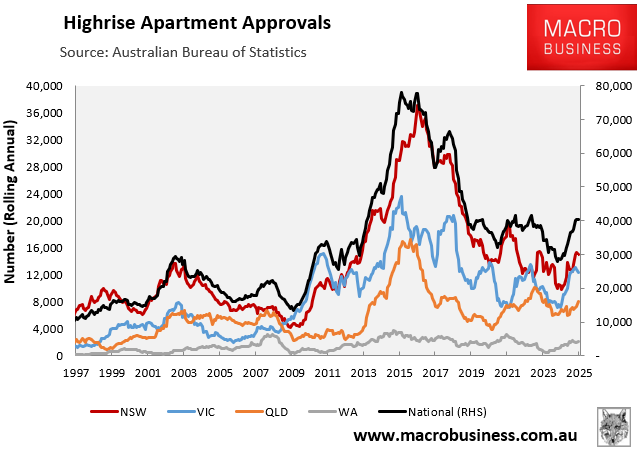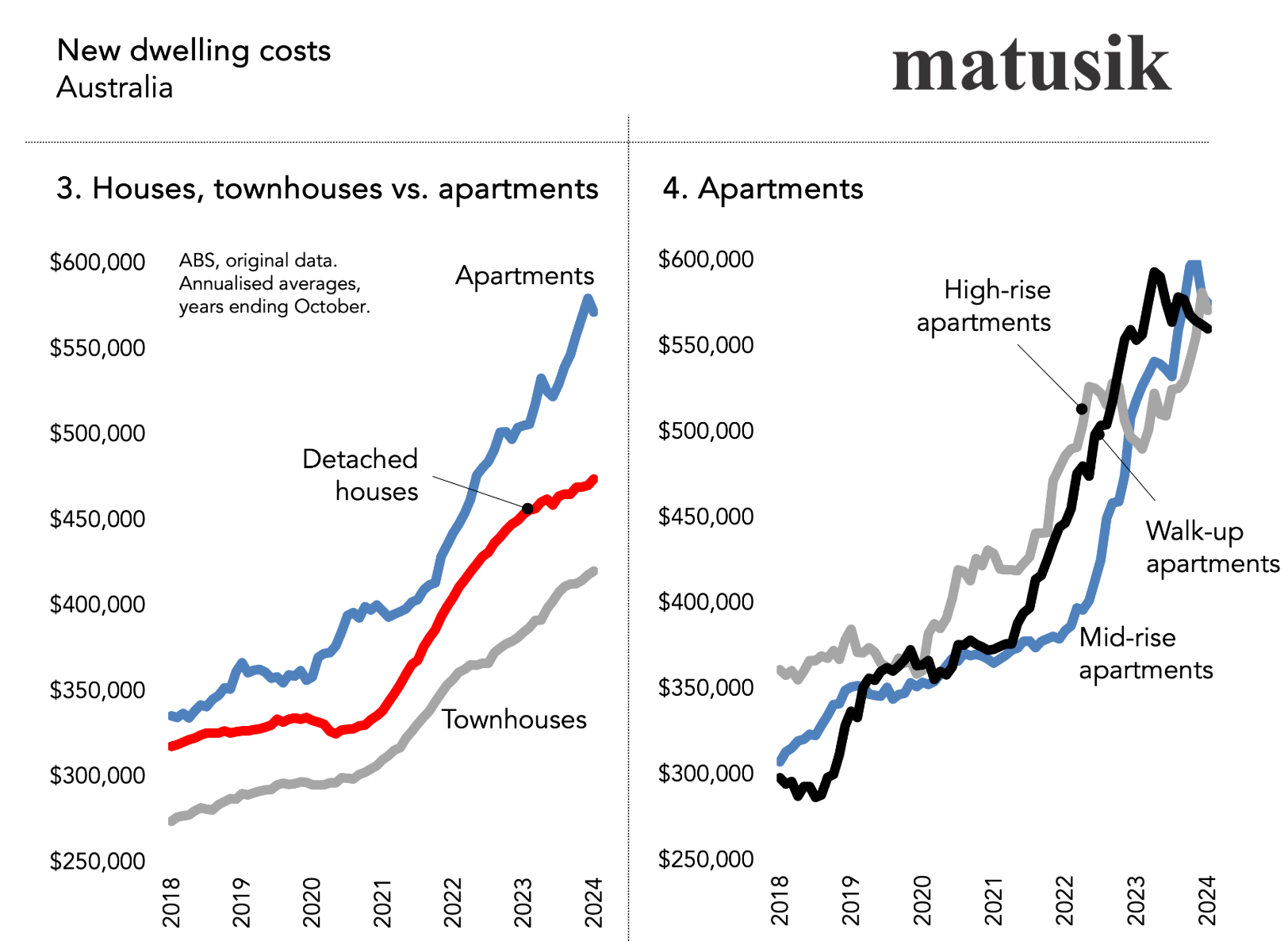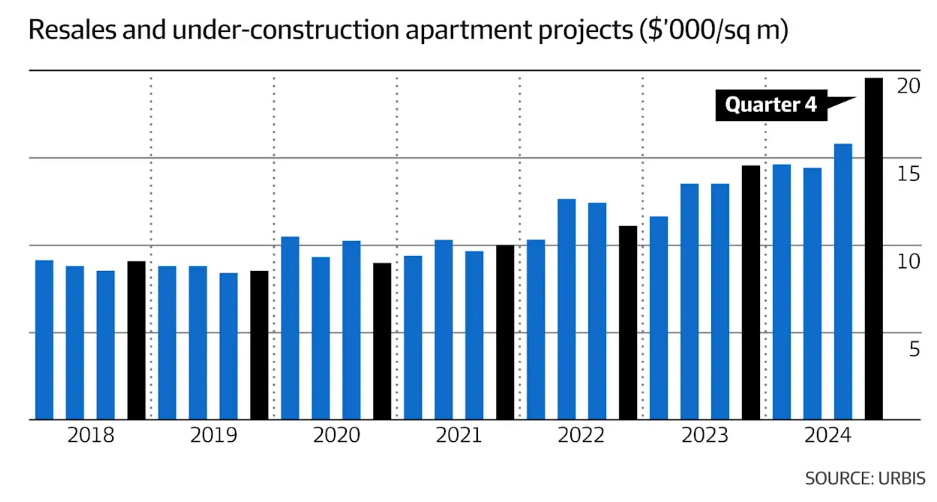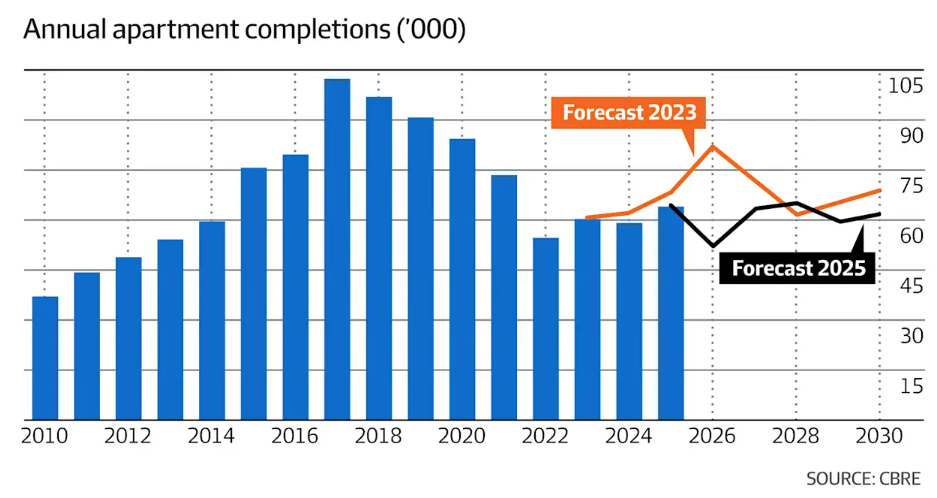The Albanese government’s fantastical target of building 1.2 million dwellings over five years is centred on delivering a boom in high-rise towers.
I have repeatedly warned that state and federal government plans to blanket our cities with high-rise apartments are unrealistic, would not improve Australian housing affordability, and would degrade liveability.
The August dwelling approvals data from the Australian Bureau of Statistics (ABS) showed that high-rise approvals rebounded somewhat but remained around 48% below their 2015 peak.

Property and planning experts this week ridiculed the Victorian Government’s plan to build thousands of high-rise apartments across Melbourne activity centres, arguing that they aren’t financially viable and would be too expensive for prospective buyers.
“I’ve been warning about this since they first came up with the idea for activity centres, they’re doing all of this to sell the idea that they’re solving housing supply without actually solving housing supply”, Intrapac CEO Max Shifman said.
To obtain financing for high-rise developments, builders have to prove that there is demand, typically by pre-selling at least 50% of the apartments.
However, Shifman argued that demand is unlikely to be met at the activity centres, citing increasing building costs, regulatory costs, and labour costs as factors driving up the prices of dwellings in these new developments.
“All of this stuff conspires to make the end price that you need to charge consumers significantly higher than what they’re prepared to pay. And as long as that remains the case you’re not going to see apartments happen at scale”, he said.
Charter Keck Cramer’s Richard Temlett agreed, adding that “there are certain areas where building costs have risen 40% to 50% since 2019”, but realisable revenues or the prices received have not risen to compensate.
The following chart from Michael Matusik illustrates why it has become too expensive to build high-rises and why they cannot be delivered at a reasonable cost to buyers.

In a similar vein, Urbis reported that selling prices in Australia’s largest cities rose by a record 24% last year, reaching more than $19,000 per square metre.

“In the last couple of years, the majority of sales across the country have been above $1 million, targeting that downsizer market”, Urbis director Mark Dawson stated.
Meanwhile, CBRE forecast that Australia will deliver 30,000 fewer apartments this year than previously expected as developers hold off on projects they cannot sell profitably.
“The number of new apartment completions will drop from 64,031 last calendar year to 52,505—well below the 81,880 homes the commercial real estate agency forecast two years ago”, The AFR’s Michael Bleby reported.
“It’s because feasibilities didn’t stack up a year or two ago and projects are running slightly behind schedule”, CBRE head of Pacific research Sameer Chopra told The AFR.
“Even now, feasibilities are still about 20% under water”, he said.
“In the middle of an affordability crisis, the traditional triggers of supply and demand are failing to stimulate more housing development in Australia’s market-led system because it costs more to build new homes than people can afford to pay for them”, Bleby reported.

The economics of apartment construction currently do not add up. Therefore, the anticipated surge in apartment construction remains a pipe dream.

